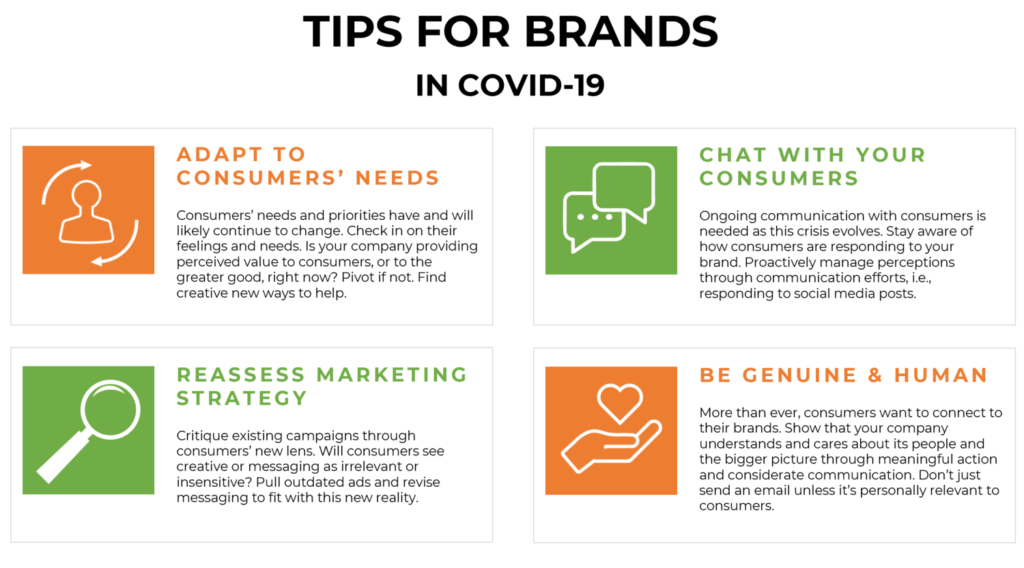Lots of ink has been spilled on various reports and news stories about this pandemic. From its early days in China to its devastating death tolls globally as it spreads to how some markets like Germany and South Korea are slowly opening up their markets to re-establish ‘life as normal’, there has certainly been no lack of opinion, professional or editorial, on the impact of this international viral outbreak.
As the stages of recovery vary across markets, the tonality of different write-ups is gradually shifting towards one that is more forward-facing (and some would even say, hopeful!). Different articles are springing up, pontificating on what kinds of post-pandemic world we want to see. Some question the validity of returning to a ‘normal’ that was anything but in the first place, while others take a more macro-level analysis to arrive at how entire economies and governance should pivot so we’re prepared for the fall-out the best way we can.
We would like to add our voice to this body of work, and share our thoughts on how we think the post-COVID will look like for certain industries, by doing what we do best: analysis through the consumer lens.
Based on our expertise in specific sectors, we went about consolidating and analyzing all current phenomenon that are happening globally, examining the impact of changes that have been observed, thinking about habits that have been formed and questioning what it all means in the long term. Over the next few weeks, we’ll share these – covering everything from retail finance to food and beverage.
What kinds of change can / should we expect?
When it comes to the ‘future’, there are various existing theories in the realm of behavioral sciences, that talk about how humans tend not to be ‘future-oriented’ and usually value the ‘now’ more. Within the context of talking about change, that presents a real problem – as the inability to visualize/internalize a version of the future gets in the way of discussing or enacting change. This is a significant point that we need to acknowledge, right off the bat, otherwise any projections or proclamations about post-pandemic change will likely be no more than wishful thinking.
Another common way to put forth any suggestions of change tend to be what is known as the ‘convergent’ approach: for example, Phenomenon A is likely to happen, because Phenomenon B, C and D are observed to be present, and form favorable conditions/climate to facilitate A’s occurrence. While not wrong, and this is at the heart of many techniques of scenario analysis (PESTLE being one of them), it again does not account for the ‘human agency’ element, the clear and pinpointed reason why a change CAN and SHOULD happen.
Get regular insights
Keep up to date with the latest insights from our research as well as all our company news in our free monthly newsletter.

To this end, amongst the many change management models out there, we feel there is one that may be particularly useful to help us conceptualize the change that can come about in a post-COVID world. Chip and Dan Heath’s ‘sticky habits’ model talks about how, at the heart of reasonable and sustained changes, are 3 simple elements which explain why/how those changes happened, in spite of supposedly challenging circumstances.
In this model, which can also be used to operationalize change, the authors argue that alignment amongst the rational and emotional sides of a person is crucial in setting about the momentum for change. That process is facilitated further when the route towards change is clear, attainable, and rewarding to the individual aiming to change. The analogy the authors offer is an elephant rider on a path: the ‘rider’ symbolizes the rational mind, while the ‘elephant’ stands for the emotional mind. A determined ‘rider’ cannot make an unwilling ‘elephant’’ go down an intended path, no matter how hard he/she tries, much as how even if the ‘elephant’ is willing, it cannot effectively be on the road without efficient directing from the ‘rider’. Within that analogy, the ‘path’ will also need to be clearly marked and signposted, so it is the actual one the ‘elephant’ and the ‘rider’ wishes to travel on.
We believe in this model, as we feel it helps to guide our examination of change that’s really rooted in consumer needs: what is it about a particular change that we have observed that shows how the rational and the emotional mind have been satisfied, such that even though the path is ‘unclear’, we understand and are confident that it is a feasible change that will stick, once the pandemic is over.
What will stay the same?
“The more things change, the more they seem to stay the same…”
The saying above cannot be truer; in fact, that is the whole premise for a lot of science-fiction based entertainment. The future in a lot of these alternate realities are often only incrementally different to the one that we are living in, because storywriters depicting these worlds realize that no matter how far away this future is, it needs to be rooted in a certain degree of ‘realism’ in order for readers/viewers to appreciate and accept the portrayal, as well as contrast how different/’out of this world’ the changes are.
Another way to understand this contrast between change and non-change, and how acceptance is achieved, is through the MAYA Principle: MAYA stands for ‘most advanced yet acceptable’. This principle provides guidance in the world of product design. As a discipline, product designers are always faced with the challenge of producing something new and exciting for consumers, be it a piece of furniture or an electronic product. Designs that draw too much inspiration from the left field can risk alienating potential users, while sticking too much to the status quo results in a product that does not excite at all. The MAYA principle thus proposes that designers can focus on elements within their work that taps onto the notion of a ‘familiar strange’, where it’s new enough to pique interest, but familiar enough that it does not overwhelm and lead to outright rejection.
Taking on both notions, we thus feel that even as we look forward to propose what’s going to change post COVID-19, we should also take note of consumer mindsets that will likely remain the same, the ‘evergreen’ needs that will not be displaced, even as the world hurtles towards a ‘new normal’.






 Senior Marketing Executive
Senior Marketing Executive Sales & Marketing
Sales & Marketing General Manager PR -Internal Communications & Government Affairs
General Manager PR -Internal Communications & Government Affairs Vital Strategies
Vital Strategies
 Customer Intelligence Director
Customer Intelligence Director